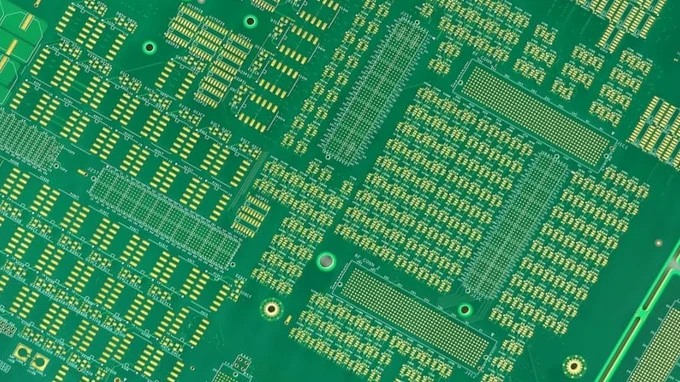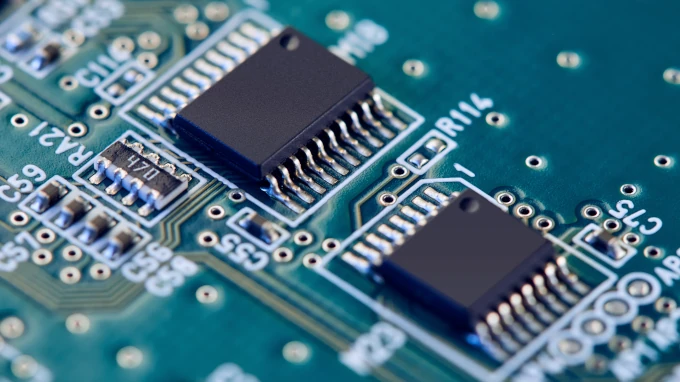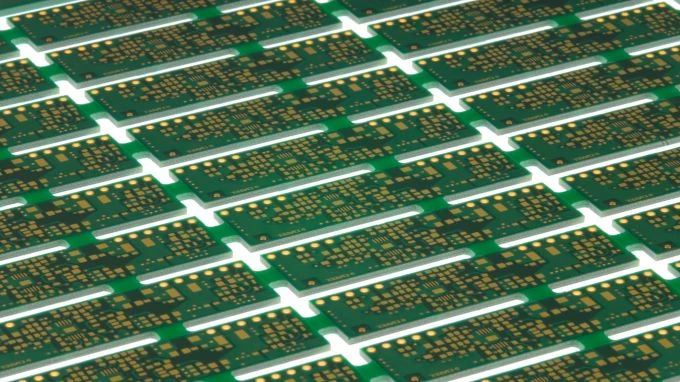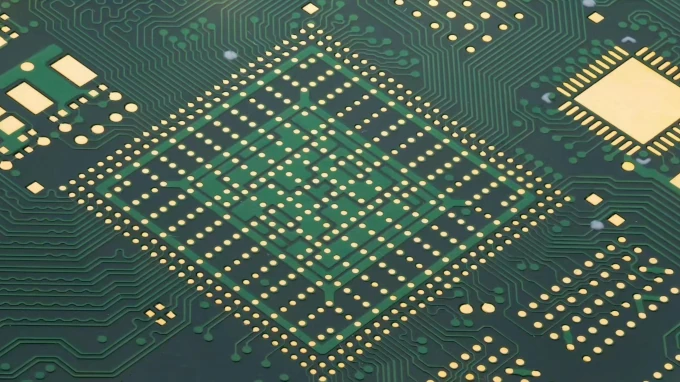HDI PCB Key Features High-Density Interconnect (HDI) PCBs are advanced circuit boards designed for complex, high-density electronic assemblies. The key
Home > Blog > PCB Design > HDI PCB Material Selection Guide
High-Density Interconnect (HDI) PCBs are advanced circuit boards designed for complex, high-density electronic assemblies. The key features of HDI PCBs include:
HDI PCBs utilize microvias—small-diameter vias typically drilled with laser technology—to create interlayer connections. These microvias are often only a few mils in diameter and allow for high interconnection density while preserving space for routing.
HDI technology incorporates blind vias (connecting outer layers to internal layers without passing through the entire PCB) and buried vias (restricted to internal layers), which enable more routing channels and reduce via count on outer layers, enhancing signal integrity and miniaturization.
HDI PCBs use very thin dielectric layers and reduced circuit layer spacing, facilitating finer line widths and spacings, which contribute to increased circuit density and higher performance at high frequencies.
The stacking of multiple layers with microvias allows for complex, multi-layer interconnections in a compact form factor, supporting advanced applications like smartphones, tablets, and high-speed computing devices.
To achieve high performance, HDI PCBs often employ advanced dielectric substrates and high-quality prepregs tailored for controlled impedance and high-speed signal transmission.
Combining microvias with via-in-pad and other innovative techniques allows for flexible and intricate board designs, supporting component miniaturization and improved electrical performance.
HDI fabrication relies heavily on laser drilling for microvias, laser Direct Image (LDI) processes, and precise lamination to ensure accurate via formation and reliable interlayer connections.
Reduced via sizes and optimized layer stacks improve signal integrity, reduce parasitic inductance and capacitance, and enable high-frequency operation suitable for RF and high-speed digital circuits.
Microvias and advanced materials contribute to better thermal management, mechanical stability, and overall robustness in miniaturized designs.
HDI materials and processes are governed by standards such as IPC-4104, which define classifications, quality requirements, and manufacturing best practices to ensure consistency and reliability.
High-Density Interconnect (HDI) PCBs require specialized laminates that cater to their complex construction and performance requirements. Here is a summary of the key aspects of HDI PCB laminates:
HDI laminates are typically made from advanced dielectric materials that provide excellent electrical insulation while supporting high-frequency performance. Common materials include epoxy and polyimide, which offer good thermal stability and mechanical strength.
Laminates used in HDI applications are often thinner than those in standard PCBs, which helps to reduce the overall thickness of the board and supports the dense packing of features.
The laminates often incorporate adhesive layers that bond multiple layers of the PCB together. These adhesives must be compatible with the process conditions and provide reliable electrical performance without degrading over time.
HDI laminates are designed to handle higher temperatures during processing and operation. They have good thermal conductivity to dissipate heat effectively and maintain performance under thermal stress.
The materials chosen typically exhibit low dielectric loss, which is crucial for maintaining signal integrity in high-speed applications. This is important for minimizing attenuation and crosstalk in densely packed circuits.
Given that many flexible circuit materials are hygroscopic, HDI laminates are often treated to resist moisture absorption, protecting against potential issues like delamination and electric failure during operation.
The laminates must be compatible with various fabrication processes used in HDI PCB manufacturing, including laser drilling for microvias and fine line etching, to ensure high yields and reliable performance.
In conclusion, the selection and characteristics of HDI PCB laminates are critical to achieving the desired performance, reliability, and compactness of high-density interconnect circuits. These features ensure that HDI PCBs can meet the demands of modern electronic applications effectively.
When selecting materials for High-Density Interconnect (HDI) PCBs, it is essential to consider several factors to ensure optimal performance, reliability, and manufacturability. Here is a summarized guide to HDI PCB material selection:
Dielectric Material: Typical choices include epoxy and polyimide. Polyimide offers superior thermal stability and flexibility, making it suitable for high-temperature applications, while epoxy is often more cost-effective and easier to process.
Thickness: Thinner base materials (e.g., 50 μm or less) are preferred to accommodate high-density designs while maintaining performance.
Copper Thickness: Use thinner copper foils (e.g., up to 18 μm) to facilitate the definition of fine line features and microvias. Thinner copper layers mitigate the effects of isotropic etching during circuit fabrication.
Adhesiveless Laminate vs. Adhesive-Based: Adhesiveless laminates provide better dimensional stability and reliability at high temperatures compared to adhesive-based laminates, making them preferable for HDI applications.
For multilayer construction, the choice of adhesives is critical. Use adhesives with a high coefficient of thermal expansion (CTE) that matches the base materials to minimize stress during thermal cycling.
Fast-curing adhesives are typically chosen to enhance manufacturing efficiency, while ensuring a strong bond without compromising flexibility.
The material should exhibit high mechanical strength, yield, and flexibility to withstand the stresses of bending and flexure typically found in HDI applications.
Look for materials with low warpage and good dimensional stability to avoid issues during assembly and soldering processes.
Ensure materials can effectively dissipate heat during operation. Choices should include thermally conductive materials or those designed specifically for high-temperature applications.
Select materials with low dielectric constants and low dissipation factors to maintain signal integrity, especially for high-frequency applications,.
Consider the loss tangent and the frequency stability of the materials to ensure they are suitable for RF and microwave applications.
Choose materials that comply with industry standards for environmental factors, such as flammability and moisture resistance. Materials should be able to resist potential environmental deterioration.
Ensure that the selected materials meet necessary standards (e.g., IPC standards) and regulations relevant to the target market, especially in sectors like automotive and aerospace.
By carefully considering these factors when selecting materials for HDI PCBs, manufacturers can ensure that the end product meets performance standards while being reliable and cost-effective. For further detailed information, feel free to consult our sales representative.
HDI PCB Key Features High-Density Interconnect (HDI) PCBs are advanced circuit boards designed for complex, high-density electronic assemblies. The key

Lead-free HASL (Hot Air Solder Leveling) and ENIG (Electroless Nickel Immersion Gold) are two common PCB surface finishes. Lead-free HASL

Reflow soldering temperature setting is a precise and critical process in electronics manufacturing, as it determines the quality and reliability

Lead-free HASL (Hot Air Solder Leveling) and ENIG (Electroless Nickel Immersion Gold) are two common PCB surface finishes. Lead-free HASL offers good solderability and is cost-effective but can

HDI PCB Material Selection Guide HDI PCB Key Features High-Density Interconnect (HDI) PCBs are advanced circuit boards designed for complex, high-density electronic assemblies. The key features of HDI